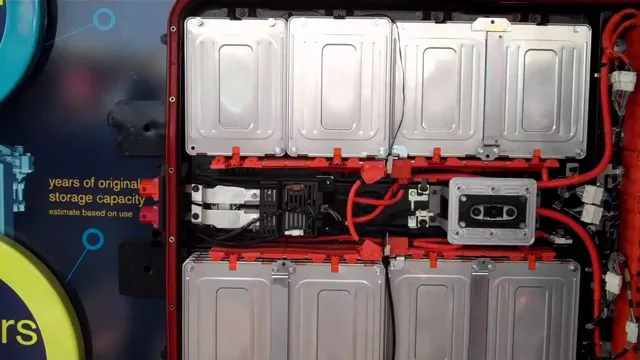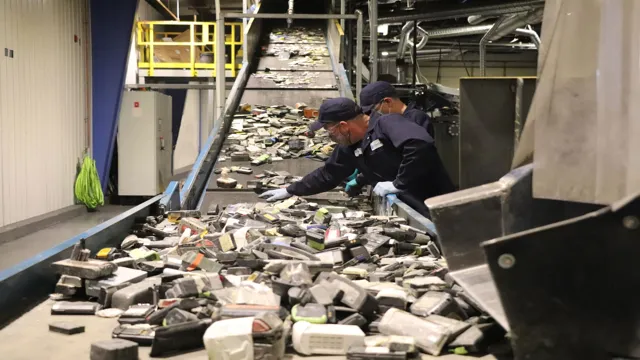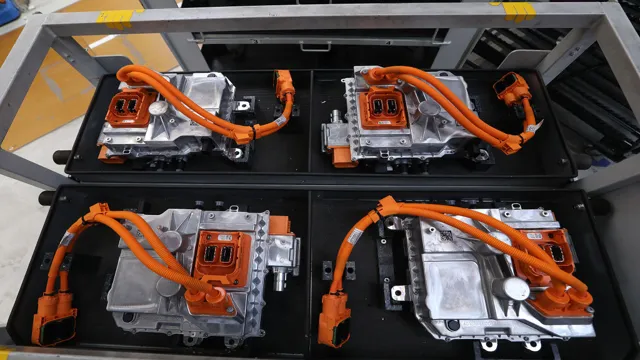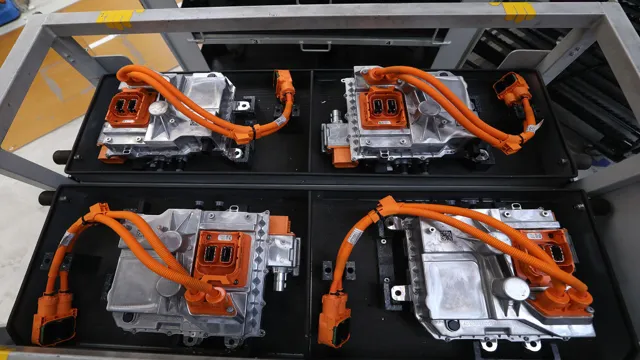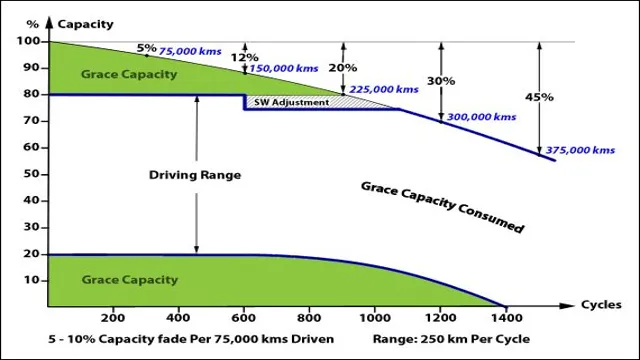Unleashing the Power: Everything You Need to Know About Electric Car Battery Specs
Are you interested in buying an electric car? One of the most important factors to consider is the battery specs. After all, the battery is what powers the car, and it can determine how far you can travel on a single charge. But what should you look for in electric car battery specs? Let’s break it down.
First and foremost, you’ll want to consider the battery capacity, which is measured in kilowatt-hours (kWh). This will determine how much energy the battery can hold and thus how far you can travel on a single charge. A higher kWh rating generally means a greater driving range, but it also comes with a higher price tag.
Another important factor to consider is the charging time. How long does it take to fully charge the battery? This can vary depending on the type of charger and the capacity of the battery, but many electric cars can be charged to 80% in less than an hour using a fast charger. You’ll also want to look at the power output, measured in kilowatts (kW).
This will determine how quickly the car can accelerate and how fast it can go. Higher power output means faster acceleration, but it can also drain the battery more quickly. Overall, the battery specs are a crucial factor to consider when buying an electric car.
They can determine how far you can travel, how quickly you can charge, and how fast you can go. By understanding these specs and how they impact performance, you can make an informed decision when choosing an electric car that suits your needs and budget.
Battery Voltage and Capacity
Electric car battery specs vary depending on the voltage and capacity of the battery. Voltage is the electric potential difference between two points in an electrical circuit, and capacity is the amount of energy the battery can store. Generally, electric car batteries have a voltage between 300 to 400 volts, and a capacity ranging from 60 to 100 kWh.
However, depending on the make and model of the car, battery specs can differ. Tesla’s Model S, for example, has a battery voltage of 375 volts and a capacity of 100 kWh, while a Nissan Leaf has a battery voltage of 360 volts and a capacity of 30 kWh. Battery specs are crucial to understanding the performance and range of an electric car.
The higher the voltage and capacity, the further the car can travel without needing to recharge. When considering purchasing an electric car, it’s important to review the battery specs to ensure it meets your driving needs.
Voltage Range: 200-800V
When it comes to electric vehicles and battery technology, one of the most important factors to consider is the battery’s voltage and capacity. The voltage range typically varies between 200-800V, which plays a big role in the vehicle’s overall performance and range. A higher voltage allows for more power output and longer driving distances, while a lower voltage may result in a shorter range and decreased performance.
Capacity, on the other hand, refers to how much energy the battery can store. This is typically measured in kilowatt-hours (kWh) and can range from around 30-100 kWh depending on the vehicle and battery technology. A higher capacity battery allows for longer driving distances, but can also increase the cost and weight of the vehicle.
It’s important to consider both the voltage and capacity of a battery when choosing an electric vehicle, as they both play a crucial role in the vehicle’s performance and range. By understanding these factors, consumers can make informed decisions on which electric vehicle is the best fit for their needs and lifestyle.

Capacity Range: 30-100 kWh
Battery voltage and capacity are crucial factors in determining the overall performance of an energy storage system. Batteries with a voltage range of 400-500V are compatible with most solar inverters and offer reliable performance. However, the capacity of the battery is equally critical, determining the amount of energy that can be stored and used on-demand.
Battery systems with a capacity range of 30-100 kWh are ideal for households with above-average energy consumption. This size range of batteries can be used to power multiple appliances and devices at once, such as air conditioning units, refrigerators, and lighting. A larger battery capacity also means more energy can be stored during the day when solar panels are producing at peak capacity, providing a reserve for use at night or during cloudy weather.
When choosing a battery system, it’s essential to consider both voltage and capacity to ensure it meets the energy needs, budget, and system’s compatibility.
Battery Chemistry
When it comes to electric car battery specs, the chemistry used in the battery is crucial. Lithium-ion batteries are the most commonly used battery chemistry in electric cars due to their high energy density and long lifespan. These batteries work by using lithium ions to travel between the anode and the cathode, creating a flow of electricity.
However, there are also other types of battery chemistries being developed for use in electric cars, such as solid-state batteries, which could potentially offer even higher energy densities and faster charging times. It’s important to keep an eye on battery chemistry advancements to ensure that electric cars can continue to improve in terms of range, charging times, and overall performance.
Lithium-Ion Battery
Lithium-ion batteries are the most commonly used rechargeable batteries around the world. But have you ever wondered how they actually work? The battery chemistry involved in lithium-ion batteries is fascinating. These batteries use a cathode, anode, and electrolyte to produce electrical energy.
The cathode is usually made of lithium cobalt oxide or lithium iron phosphate, while the anode is made of graphite. The electrolyte is a lithium salt dissolved in an organic solvent. When you charge a lithium-ion battery, lithium ions move from the cathode to the anode through the electrolyte, where they get embedded in the graphite material.
When the battery is in use, the process reverses, and the lithium ions move from the anode to the cathode, generating electricity. The use of this battery chemistry allows for high energy density, low self-discharge rate, and long lifespan. Because of this, lithium-ion batteries are now used in various applications, from powering our smartphones to electric vehicles.
Cobalt, Nickel, Manganese ratio
The Cobalt, Nickel, Manganese ratio is a critical aspect of battery chemistry that plays a vital role in determining the performance and lifespan of rechargeable batteries. These three metals are used in the cathode of most lithium-ion batteries, and their ratio can have a significant impact on the battery’s energy density, stability, and safety. A higher percentage of cobalt in the cathode has traditionally been associated with higher energy density and better performance.
However, cobalt is relatively expensive and scarce in the earth’s crust, making it less sustainable and more costly in the long run. On the other hand, nickel is cheaper and more abundant than cobalt, making it an attractive alternative. However, nickel-rich batteries may be prone to safety issues and degradation over time.
The solution lies in finding the right balance between cobalt, nickel, and manganese to optimize the battery’s performance, durability, and safety. A higher percentage of manganese in the cathode can enhance battery stability and reduce the risk of thermal runaway, which can result in battery fires or explosions. Balancing the ratio of these metals in the cathode can also improve the battery’s cycle life, allowing it to maintain its performance over time.
In conclusion, the Cobalt, Nickel, Manganese ratio is a crucial factor in battery chemistry that should not be overlooked when designing and manufacturing rechargeable batteries. Finding the right balance between these metals is essential to achieve the desired performance, safety, and sustainability of batteries. So, if you’re in the market for a rechargeable battery or developing your own, pay attention to the Cobalt, Nickel, Manganese ratio, and choose wisely!
Solid State Batteries
Solid state batteries are a promising new technology that could revolutionize the way we store energy. Unlike traditional batteries, solid state batteries use a solid electrolyte instead of a liquid one. This not only increases their energy density but also makes them safer and more durable.
Their high energy density means they could potentially power electric vehicles and other energy-intensive applications for longer periods of time, without the need for frequent recharging. What’s more, solid state batteries are also less prone to leaks and explosions, making them a safer option for use in consumer electronics. However, while solid state batteries have great potential, they’re still in the early stages of development and commercialization.
Research is ongoing to find optimal solid electrolyte materials and improve their overall performance, making them more cost-effective and accessible for widespread use.
Charging and Range
When it comes to electric cars, one of the most important factors to consider is the battery specs. The range and charging time of an electric car’s battery can make or break its appeal to potential buyers. Battery range refers to how far the car can travel on a single charge, and it depends on the capacity of the battery and the car’s overall efficiency.
Charging time, on the other hand, refers to how long it takes to fully charge the battery. Most electric cars can be charged up to 80% in about 30 minutes using a fast charger, but it can take a few hours to fully charge the battery at home using a standard charger. It’s also worth noting that cold weather can affect the battery’s performance, reducing its range and increasing charging time.
Overall, it’s important to research a car’s specific battery specs before purchasing to ensure it meets your needs and driving habits.
DC Fast Charging Speed
Many electric vehicles come with DC fast charging capabilities, enabling drivers to charge their vehicles quickly. This is particularly useful for those traveling long distances, as it reduces the amount of time spent waiting for a full charge. The speed at which your vehicle charges can vary depending on a number of factors, including the type of vehicle, its battery size, and the charging station’s capabilities.
A typical DC fast charger can deliver power at a rate of 50-150 kW. Charging speed also influences overall range, as faster charging can get you back on the road more quickly. However, it’s important to note that frequent use of fast charging can negatively impact battery health, reducing its overall lifespan.
If you’re concerned about range anxiety, consider installing a home charging unit to keep your vehicle topped up and ready to go.
Charging Time
When it comes to electric vehicles, charging time is always a concern for drivers. It’s important to know how long it’ll take to get your car fully charged before hitting the road. The charging time of an electric car is influenced by various factors, such as battery size, charging station capacity, and type of charger.
For instance, the charging time for a 200-mile range electric vehicle using a 50 kW charger is approximately 1 hour. However, using a fast charger with a 150 kW capacity could reduce the charging time to just 20 minutes. It’s essential to consider the range of your electric vehicle and the charger capacity available to you to plan your charging and driving accordingly to avoid any range anxiety.
Most electric vehicles offer enough range for most daily commutes, but a faster charging infrastructure would make it even more convenient for drivers. So, where possible, it is crucial to look for efficient charging solutions that will keep you on the move with minimum fuss and downtime.
Battery Lifespan and Recycling
One of the most important factors to consider when purchasing an electric car is the battery lifespan and how it can be recycled. Electric car battery specs vary depending on the make and model, but generally, they are designed to last for several years before needing to be replaced. However, over time, the battery’s capacity will decrease, meaning it will take longer to charge and won’t be able to hold as much charge.
It’s important to note that battery lifespan is affected by a variety of factors, including temperature, driving habits, and usage patterns. Recycling electric car batteries is also a crucial consideration, as they contain materials that can be harmful to the environment if not disposed of properly. Many manufacturers offer programs to recycle batteries, and there are also third-party recycling facilities available.
It’s important to do your research and ensure that the battery in your electric car can be recycled in an environmentally-friendly way.
Conclusion
So, in conclusion, when it comes to electric car battery specs, it’s all about finding the right balance between power and efficiency. Just like Goldilocks searching for the perfect porridge, car manufacturers are striving for a battery that isn’t too big, isn’t too small, but is just right. Because at the end of the day, we all want to be able to drive our electric cars without having to worry about running out of juice mid-journey.
And with advancements in technology, who knows, maybe one day we’ll be charging our cars as easily as we charge our phones. Until then, let’s all do our part to help the environment by embracing the electric car revolution and enjoying the ride!”
FAQs
What is the average lifespan of an electric car battery?
The average lifespan of an electric car battery is around 8-10 years or 100,000-200,000 miles.
What are the important specifications to look for in an electric car battery?
The important specifications to look for in an electric car battery are capacity (measured in kWh), charging time, and range (measured in miles).
Can you replace an electric car battery?
Yes, most electric car batteries can be replaced, but it can be costly, and may not always be necessary if the battery is well-maintained.
How do I maintain my electric car battery for optimal performance?
To maintain your electric car battery for optimal performance, avoid fully charging or draining the battery whenever possible, keep the battery cool and avoid exposing it to extreme temperatures, and use the right charging equipment.
